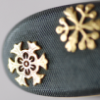-
Posts
2,959 -
Joined
-
Last visited
-
Days Won
18

Surfson replied to Drago's topic in Auctions and Online Sales or Sellers

Surfson replied to willy wonka's topic in General Nihonto Related Discussion

Surfson replied to Drago's topic in Auctions and Online Sales or Sellers

Surfson replied to Joeyg's topic in General Nihonto Related Discussion

Surfson replied to Marius's topic in Auctions and Online Sales or Sellers

Surfson replied to mercierarmory's topic in Translation Assistance

Surfson replied to SwordGuyJoe's topic in Military Swords of Japan

Surfson replied to Surfson's topic in Auctions and Online Sales or Sellers

Surfson replied to Surfson's topic in Auctions and Online Sales or Sellers

Surfson replied to Surfson's topic in Auctions and Online Sales or Sellers

Surfson replied to Surfson's topic in Auctions and Online Sales or Sellers

